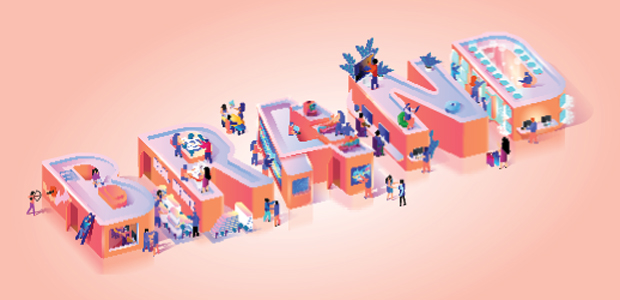
Why now is the time to think about your Brand culture
Your company’s Brand is what people think of you. It’s not what you have written on your website, or on your company walls, but it’s defined by the people who use your product or service and their perception of what your Brand stands for.
This perception is formed by the everyday experiences people have with your Brand. Your Brand is shaped by the way customer service emails are answered to how healthy your plants look in reception to how your employees feel every day when they start their workday with you, through to what your Brand’s attitude is on environmental sustainability.
With reference to employees, company culture is one of the strongest Brand-building elements that is often forgotten, especially in start-ups, as a key factor in building external Brand perception. Remember that your employees are your strongest Brand advocates. So, dethrone social media influencers (sure they can still have a place in the marketing mix, but employees as influencers come first), and instead invest in your people as micro influencers who will make it known to their network how fabulous your Brand is.
This investment in employees is always important. But at a time when many teams can’t be in a physical space together which does help to reinforce a company’s culture, it is more important than ever to ensure that employees are reminded why they are choosing to spend their time working for your Brand. In return this will be felt beyond the employees through to your wider audience.
Culture is more than the 4pm beer cart
Your culture isn’t based simply on a physical space. And sure, while that may be a part of who you are as a Brand, the elimination of this thanks to virtual working conditions doesn’t mean the end of your Brand’s culture.
A London-based ad tech start-up called Bagboard identifies one of their character traits as ‘human’. And you know what, by employees being encouraged to give a simple hi with an emoji of their choice on the company Slack channel each morning, the human side of team members sitting down to each start their workday is felt. Simple can be effective.
The CEO has to be the CBO
Brand culture must be reinforced from the top, and the CEO must consider her or himself as the Chief Brand Officer (CBO) too. The CBO should always live the company’s values. Sara Blakely of American hosiery brand Spanx epitomizes the playful and helpful nature of Spanx as a product. Her personal Instagram shares ‘real life’ in a playful tone of voice (e.g., her daughter’s quarantine haircut that resembles Michael Bolton circa 1989) and features other entrepreneurial women doing great things, reinforcing the company’s commitment to boosting all women to be their best, but to have fun while doing it.
A Brand’s culture comes from the values the Brand stands for
When was the last time you reviewed your Brand values and shared them with the team? Do it now. Word them simply so they are memorable. Remind your people why they are here. We worked with a prominent Canadian private equity investment firm to create WHO WE ARE, a book outlining the company’s values and practical wisdom like ‘Remember people’s names and take a sincere interest in knowing about them’, that highlights how the team lives the company values at work, play and home. Every employee has one. Create one now and send it to everyone at their homes.
More Zoom calls doesn’t equal a stronger culture
Scheduling an overabundance of virtual meetings doesn’t mean your company culture is more intact simply by speaking all day long. In fact, it will create burn-out and in turn, hurt your Brand. Especially if a Brand character trait is ‘efficient’. Hold ‘virtual brainstorms’ on Slack or other collaboration tools simply in a type chat format, and when you do have calls, always delegate one person to lead, ensuring agenda and time frame are followed.
This is the best time to assess how strong your culture is
Without the physical interaction, it’s actually the best time to determine how strong your company’s culture is. Is it remaining consistent without the conference room wall mission statement staring at people every day? Take the time to have a third party interview a sampling of team members, suppliers and partners to understand how your Brand is perceived. Then you can make informed adjustments. Remember, your Brand is what people think of you.

